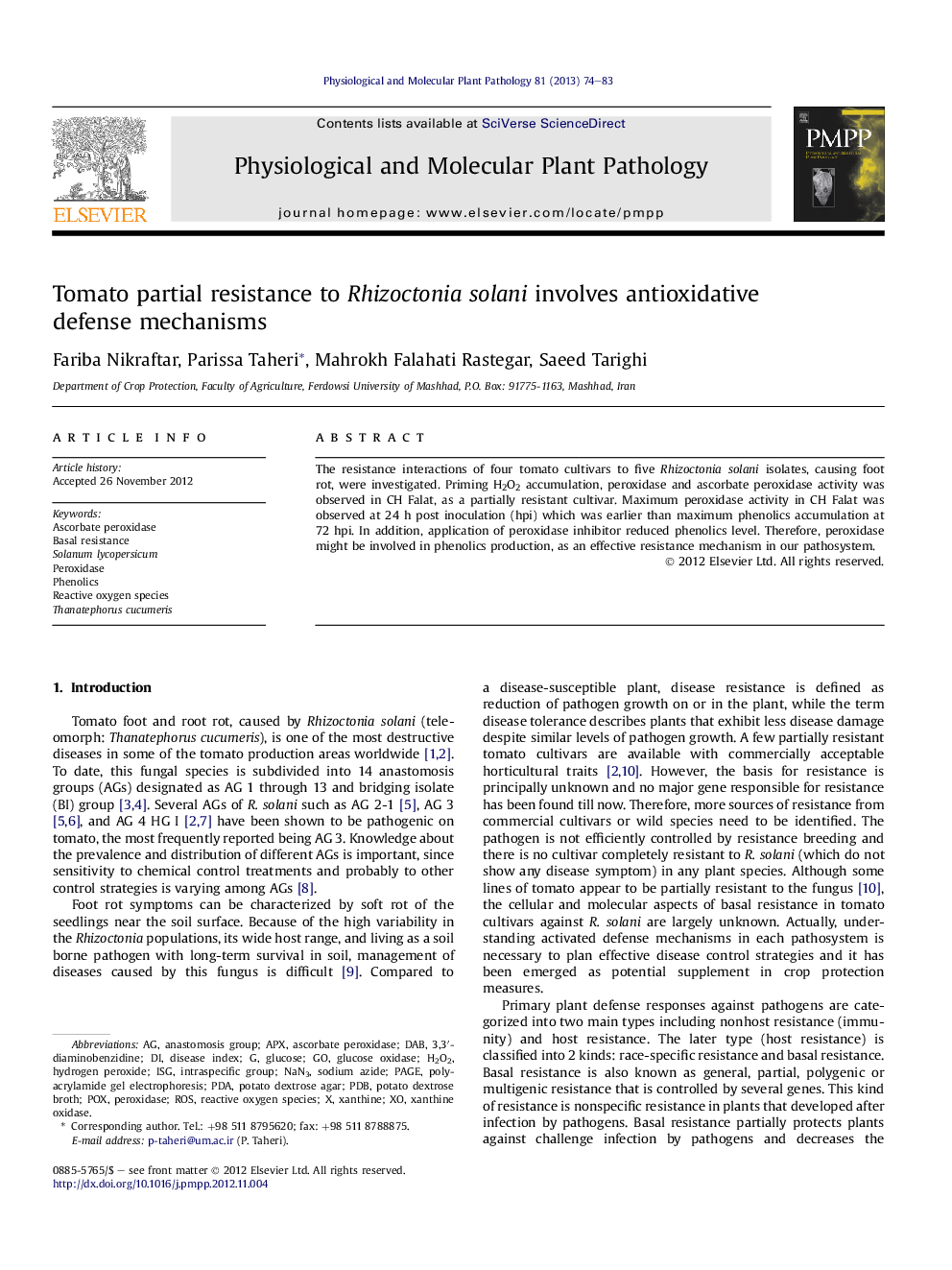| کد مقاله | کد نشریه | سال انتشار | مقاله انگلیسی | نسخه تمام متن |
|---|---|---|---|---|
| 2836428 | 1570858 | 2013 | 10 صفحه PDF | دانلود رایگان |

The resistance interactions of four tomato cultivars to five Rhizoctonia solani isolates, causing foot rot, were investigated. Priming H2O2 accumulation, peroxidase and ascorbate peroxidase activity was observed in CH Falat, as a partially resistant cultivar. Maximum peroxidase activity in CH Falat was observed at 24 h post inoculation (hpi) which was earlier than maximum phenolics accumulation at 72 hpi. In addition, application of peroxidase inhibitor reduced phenolics level. Therefore, peroxidase might be involved in phenolics production, as an effective resistance mechanism in our pathosystem.
► Infection process of Rhizoctonia solani AG 3 on tomato leaf discs.
► Correlation between infection cushion formation and severe disease progress.
► H2O2-related mechanisms involved in tomato basal resistance to R. solani.
► Importance of early H2O2 accumulation in tomato defense to R. solani.
► Involvement of peroxidase dependent phenolics production in basal resistance.
Journal: Physiological and Molecular Plant Pathology - Volume 81, January 2013, Pages 74–83